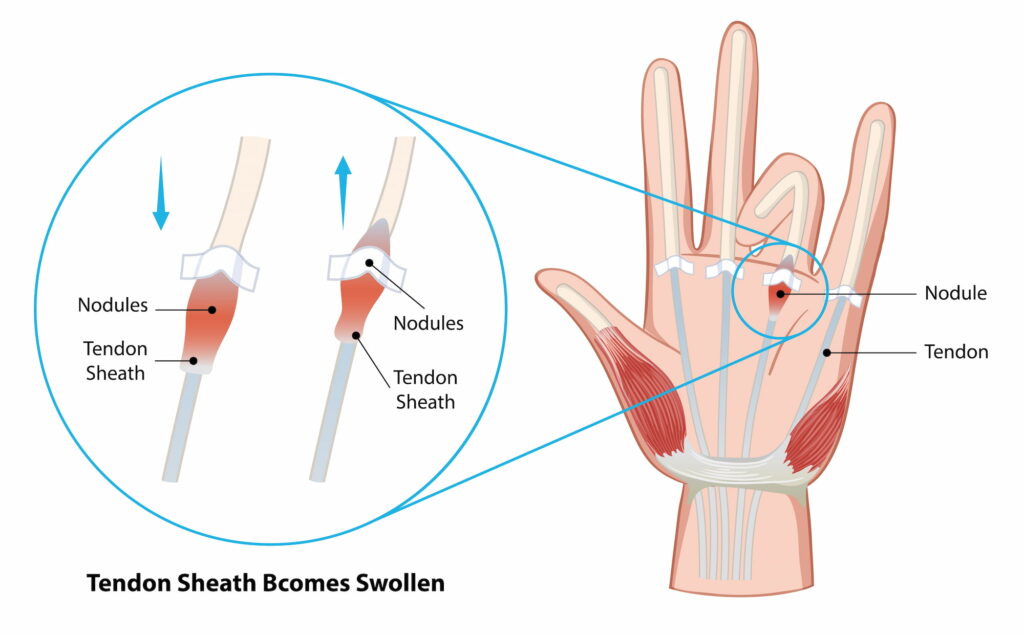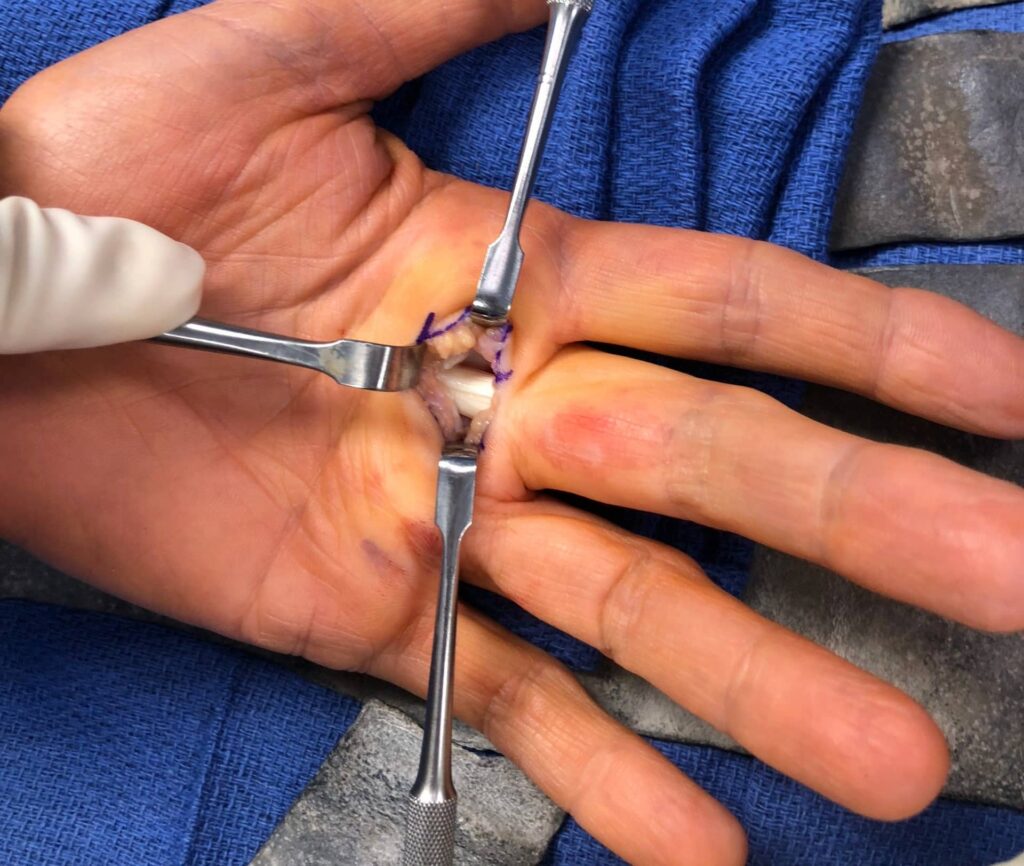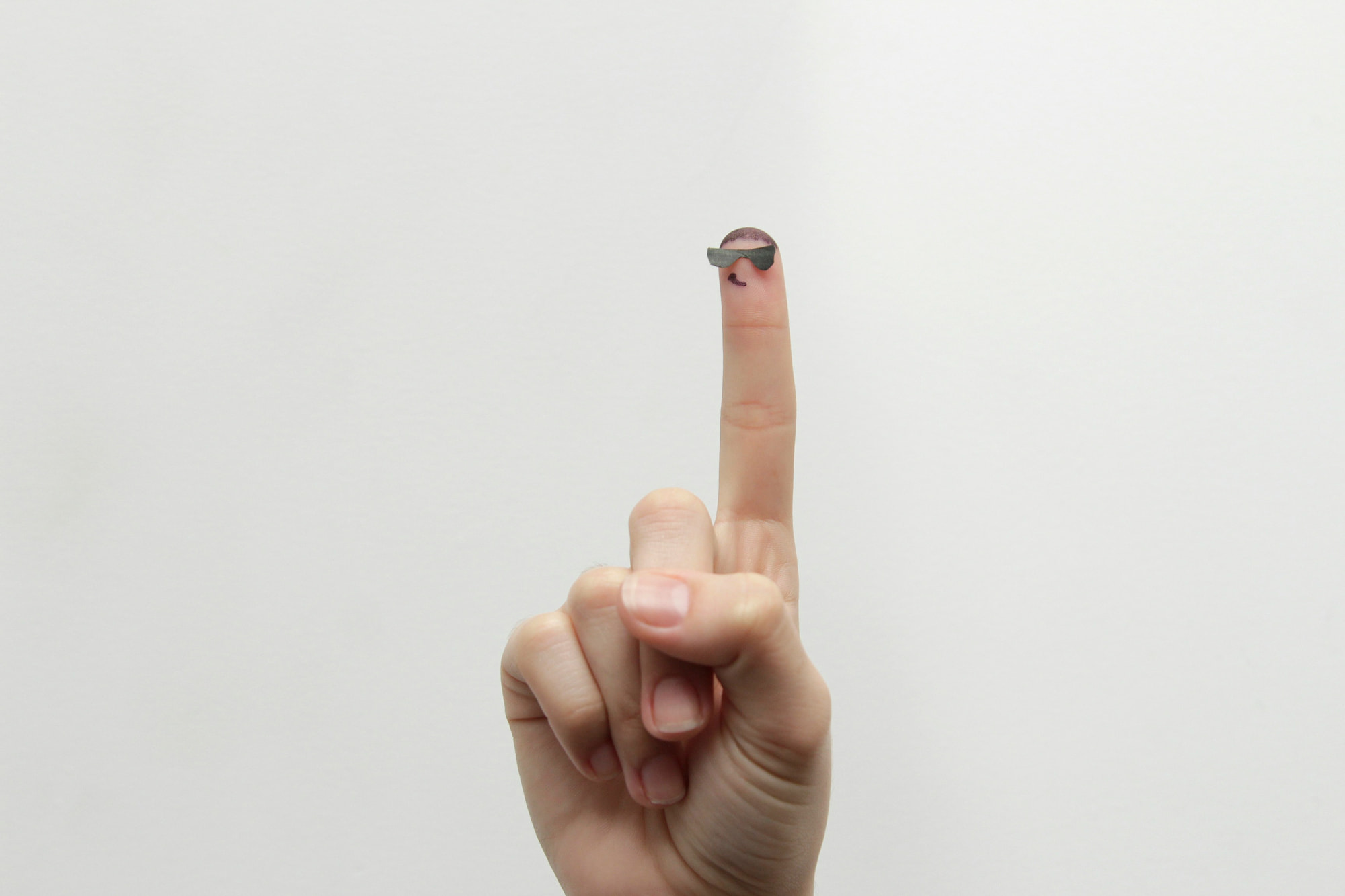Trigger finger release surgery is designed to relieve symptoms of trigger finger, in which one or more fingers lock in a bent position due to issues with the tendon or its surrounding sheath. See below for more information about trigger finger as a condition.
Indications for surgery
Trigger finger release surgery is recommended when:
- Non-surgical treatments such as splinting, anti-inflammatory medications, or steroid injections have failed
- Symptoms such as persistent finger locking, pain, or stiffness significantly interfere with daily activities
- Conditions like diabetes or arthritis contribute to worsening symptoms

What the surgery involves
Dr Lambers will discuss the most appropriate method for your condition, but Trigger finger release surgery typically involves one of two methods:
Open Trigger Finger Release Surgery
- A small incision is made near the base of the affected finger, often along a natural crease in the palm, to minimise scarring
- The surgeon releases the tight tendon sheath, creating more space for the tendon to move freely
- The incision is closed with stitches and covered with a light bandage

Percutaneous Trigger Finger Release Surgery
- This technique uses a needle inserted at the base of the finger to cut the constricting tendon sheath without making an external incision
- While less invasive, this method carries a slightly higher risk of complications, such as damage to nearby nerves or blood vessels, and has a higher risk of the condition coming back
- Dr Lambers does not perform needle releases
What to expect after surgery
Post-surgery, you may experience mild discomfort and swelling, but most patients notice an improvement in mobility almost immediately. You’ll need to limit heavy use of the hand for a few days, but light activities can typically resume soon after.
If your finger was very stiff before surgery, hand therapy or gentle exercises may be recommended to restore full range of motion. Read the full rehabilitation protocol below:
How long will you be in hospital?
Trigger finger release surgery is a day procedure, meaning no overnight stay is required. The procedure is performed under local anaesthesia, and you can usually go home within a few hours after surgery. Read more about Dr Lambers local anaesthesia use below.
Usual recovery time
Most patients can return to light activities within a week and resume normal use of the hand within a month. Driving is generally safe a few days after surgery once the effects of local anaesthesia have fully worn off as long as you are not taking strong pain relief tablets and you feel comfortable gripping the steering wheel.
Potential Risks
While generally safe, the procedure carries some risks, including:
- Infection or wound complications
- Nerve injury, especially in cases involving the thumb
- Persistent tenderness or scar sensitivity
- Rarely, complex regional pain syndrome (CRPS) causing prolonged pain and swelling
Choosing trigger finger release surgery
After careful consideration of your symptoms and lifestyle and an in-depth discussion with Dr Lambers, we recommend weighing the benefits and risks to decide whether the procedure is right for you. There’s no need to rush—your comfort and confidence in the decision are paramount. If you’re ready to discuss your treatment options or have more questions, Dr Lambers is here to provide personalised guidance.

